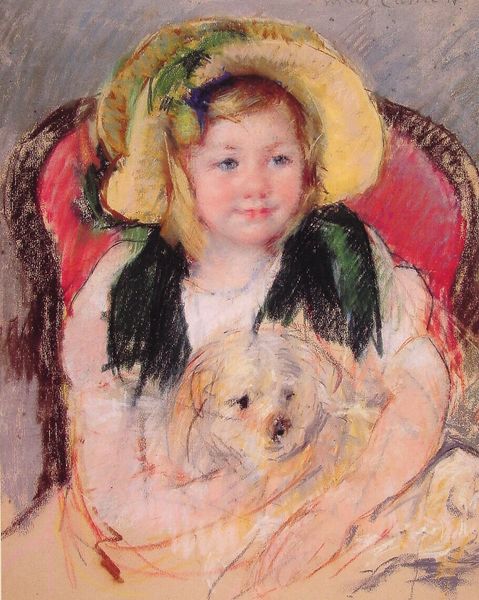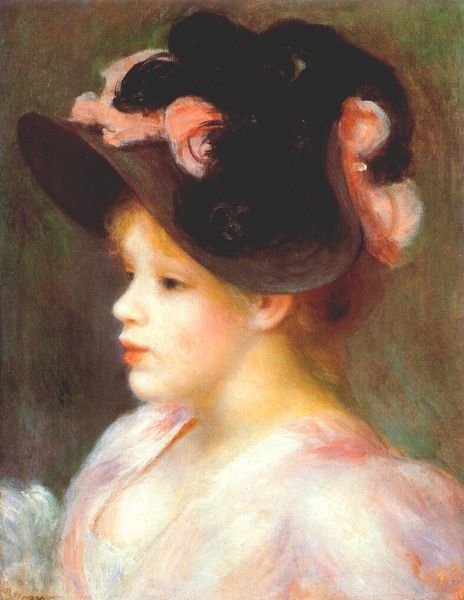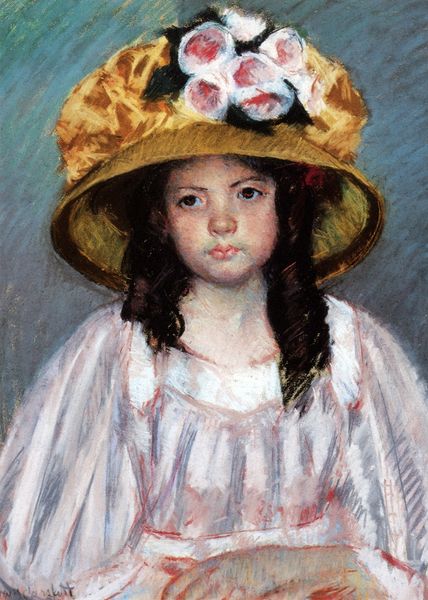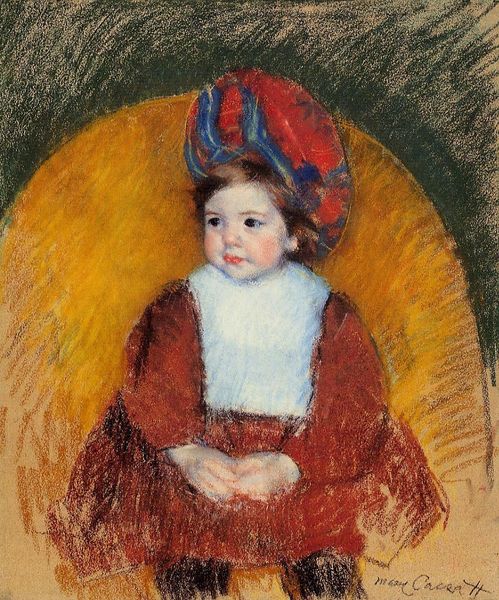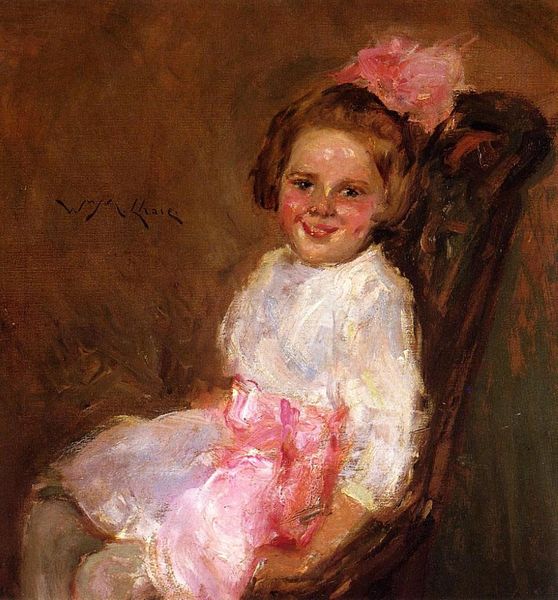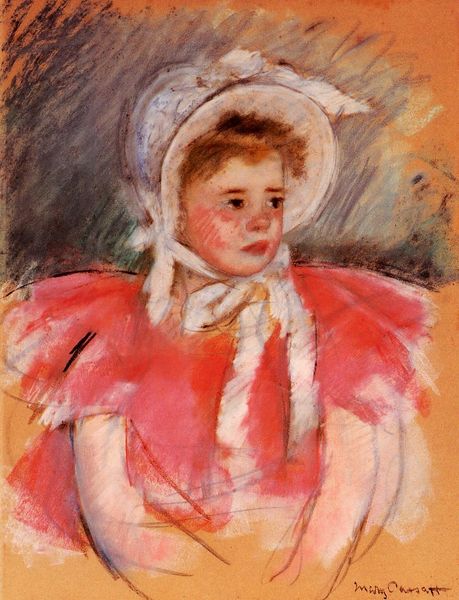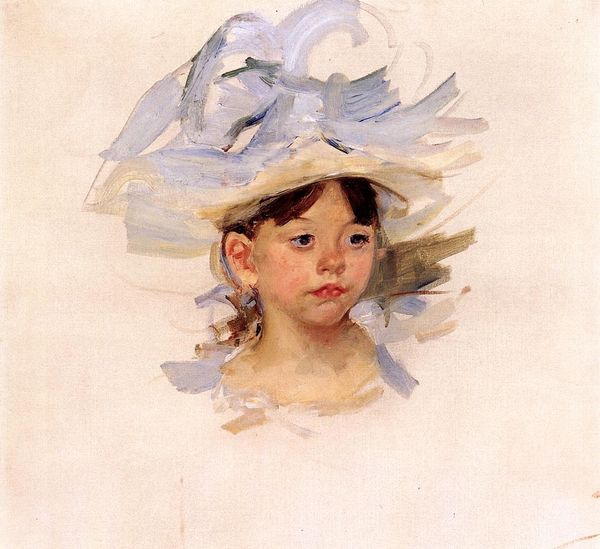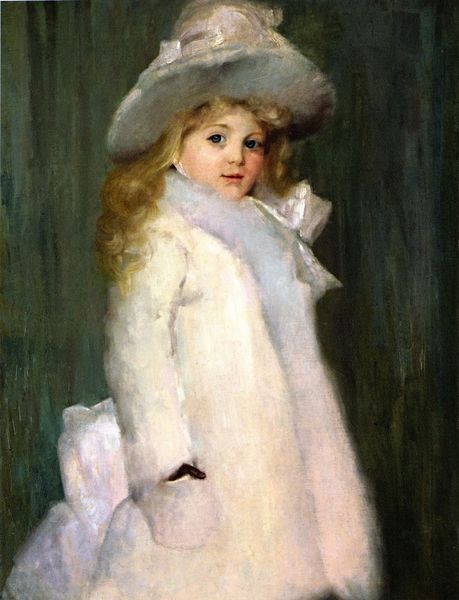
Dimensions: 60 x 72.77 cm
Copyright: Public domain
Curator: Here we have Mary Cassatt's pastel on paper artwork "Child in Orange Dress" from 1902, presently held in a private collection. Editor: Immediately, I'm struck by the girl’s gaze. There’s a certain somberness in her eyes, a knowing beyond her years that is quite unsettling, softened slightly by the loose handling of the pastel medium. Curator: Yes, the work evokes complex feelings. Cassatt, part of the Impressionist circle, was one of the few prominent women in that movement. She challenged societal norms through her artistic choices, and this portrait reflects that. In depicting a young girl in isolation, rather than the typical scenes of idealized motherhood, Cassatt subtly critiques the limitations imposed on women and girls during this period. Editor: I see the orange of the dress as a symbol, it feels both bold and constricting. The dress, juxtaposed with the delicate frills and the rather extravagant hat, creates a visual tension, highlighting perhaps, the performative aspects of girlhood. It’s like she’s dressed for a part, and the color screams for attention. I sense the historical undercurrent of prescribed roles and the loss of innocence. Curator: Precisely. And consider Cassatt’s position as an American expatriate in Europe, painting largely for a French audience, navigating the elite art world that was profoundly masculine. “Child in Orange Dress” then becomes not just a portrait, but a negotiation of identity and social space for both the artist and her subject. Editor: Indeed. The very materials Cassatt employed - pastels - themselves possess symbolic weight. Favored by women artists, but often dismissed as ‘feminine,’ they provided a subversive avenue for exploring traditionally marginalized themes. It seems an unusual medium to capture her subject with, a deliberate move, I feel. Curator: The work’s intimate scale invites contemplation, a quiet revolution enacted on paper. We're prompted to consider the narratives we often overlook in portraiture. Editor: A melancholic, poignant observation indeed, where symbol and subject merge into a telling representation of gender and expectation. Thank you. Curator: And thank you, it seems even something as ostensibly simple as a portrait of a child can unveil profound insights into its historical moment.
Comments
No comments
Be the first to comment and join the conversation on the ultimate creative platform.


